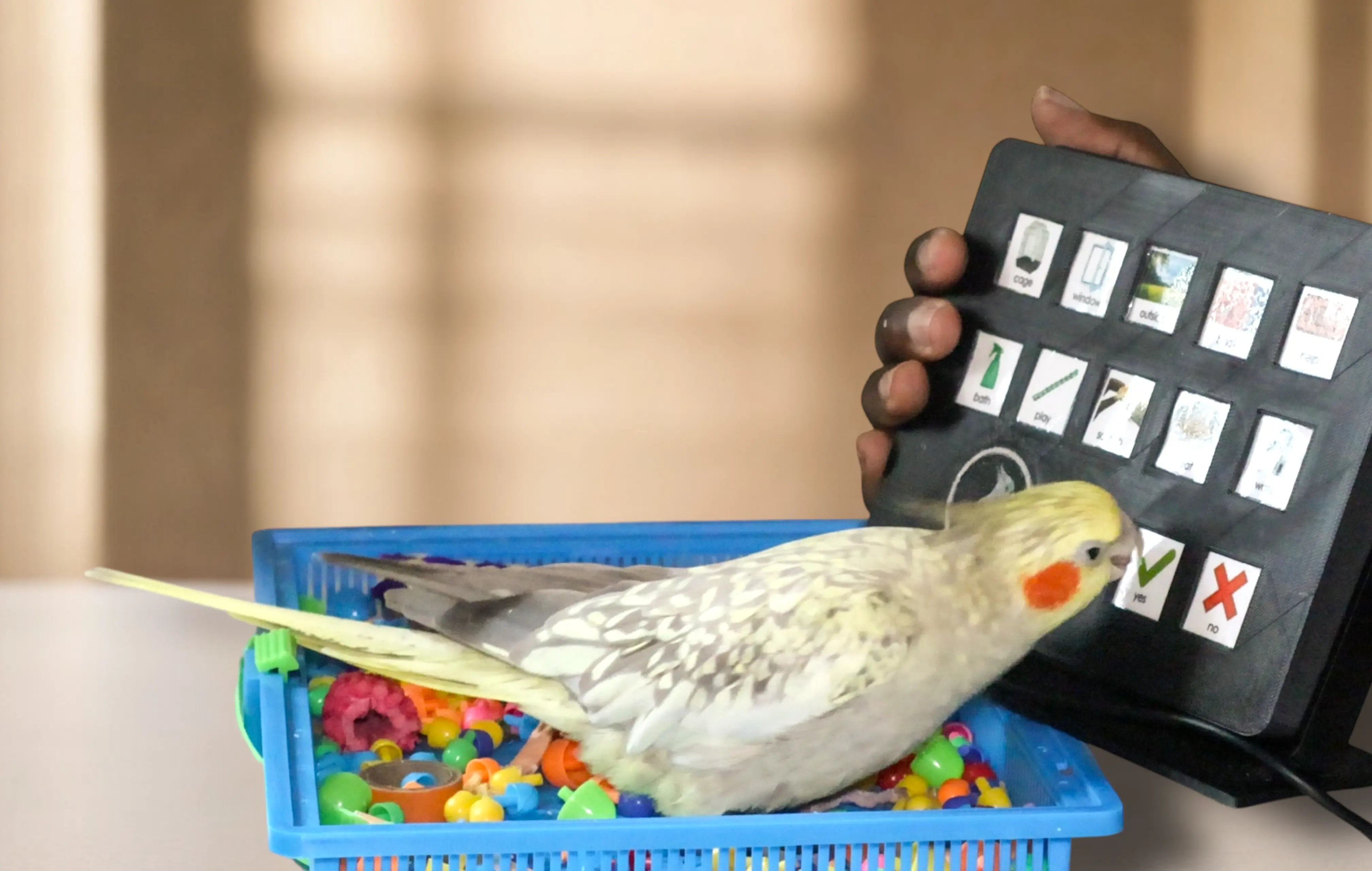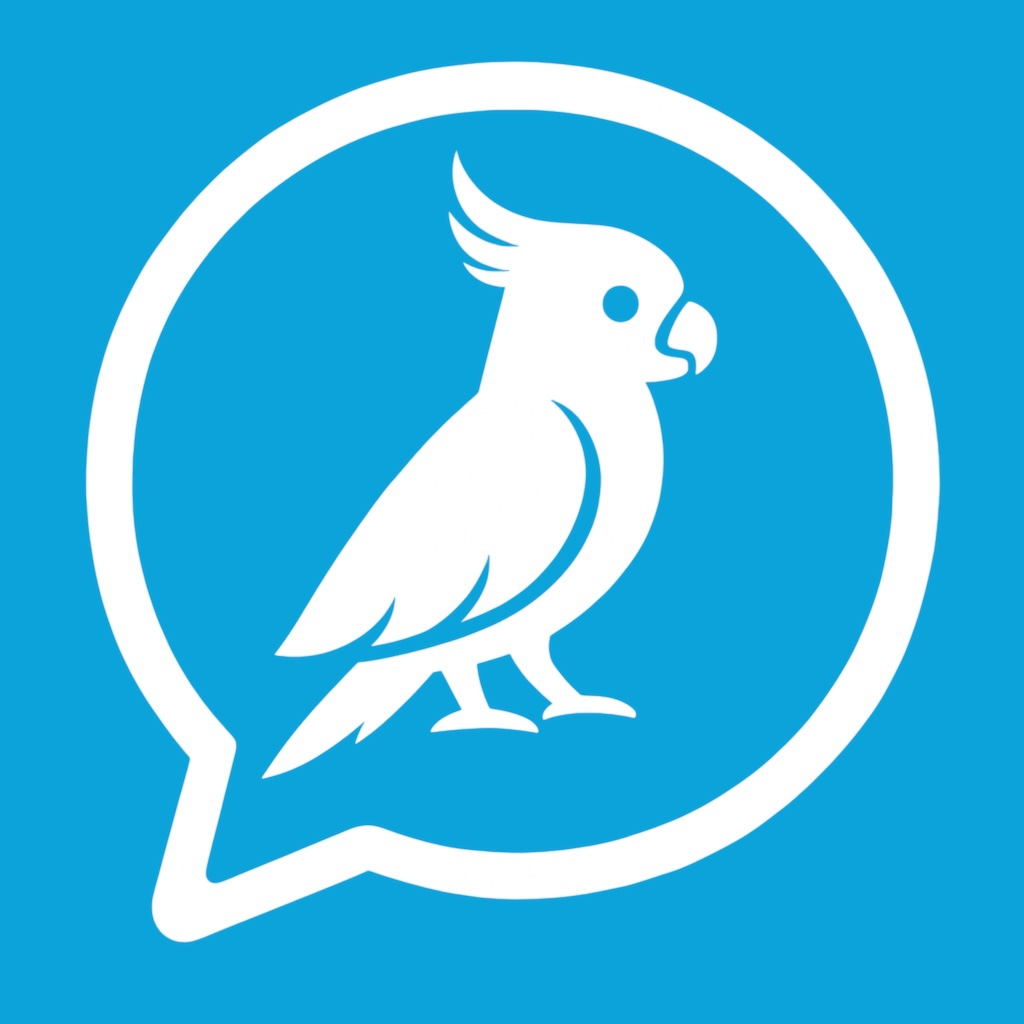The Tap That Changed Everything
When Mango showed up in my life, I knew nothing about birds. I’d always been a dog person. Just a few days earlier, I had to make the painful decision to put my dog, Mina, to sleep. I was heartbroken, and then Mango came along, almost like fate, filling that empty space with something new.
I’ve always loved teaching my pets tricks and finding ways to connect with them. With Mina, that meant sit, shake, and even putting toys away. For me, training was about more than just the tricks, it was our way of talking to each other.
When the whole pet button trend started, I tried them with Mina and saw how much potential they had, but I knew right away that those big buttons would never work for Mango and her tiny beak. So, I went searching for something else.
That’s when I discovered Jen at Parrot Kindergarten. She was using tablets and AAC-style apps with her parrots, and it opened my eyes to what was possible. I tried the same approach with Mango, but she couldn’t get it to work. The glass screen was too slippery, the taps didn’t register, and she’d lose interest and start biting my phone case. It wasn’t that she didn’t want to communicate, the tools just weren’t built for her.
So I started experimenting: flashcards, tactile setups, anything that gave her a way to choose. Over time, that curiosity turned into FeatherTalks: a lightweight, ultra-sensitive communication board built just for small parrots like Mango. And now, instead of just mimicking, Mango gets to choose her words.

Be the first to know when FeatherTalks launches
Join our waitlist and help give birds everywhere a voice.

